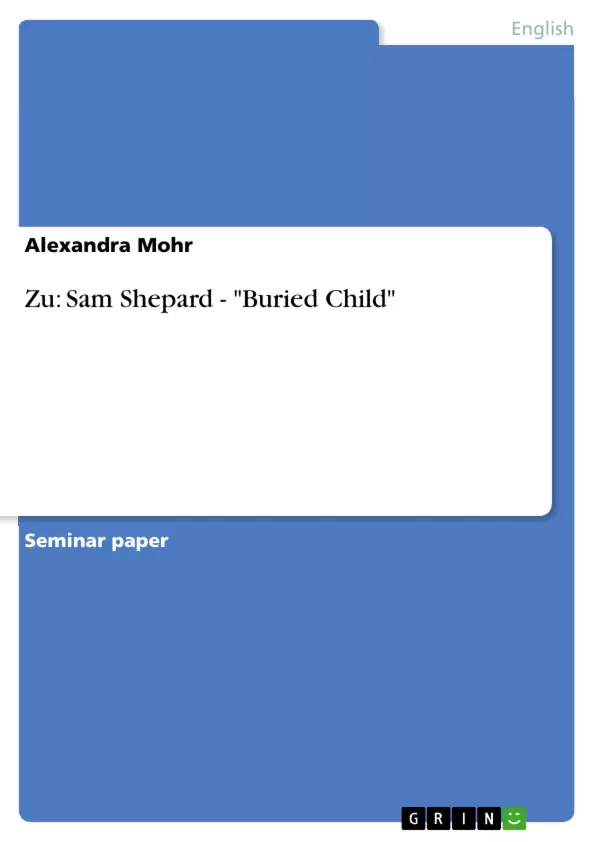Sam Shepard is known as one of the most accomplished playwrights in the United States, he also gained celebrity as an actor in a couple of American movies.
He has written more than 45 plays, different screenplays, and has received 11 Obie Awards, besides a Golden Palm Award and an Oscar nomination.
For the 1979 published play Buried Child he received the Pulitzer Price in the same year. This play belongs to Shepard′s trilogy of family dramas, and is probably the one which marks the change of direction in his career to a more realistic style.
Critics do recognize a lot of differences compared to older plays, which are seen as surrealistic plays, or plays, which critics catogorize as parts of the Theatre of Absurd, like, for example, Fool for Love.
But reading Buried Child, the reader quickly realizes that the play may have started as a realistic play, but it turns out to be totally different. Step by step, Shepard creates a sarcastic play, which also could be seen as part of the Theatre of Absurd.
The play is about a farmers family living near Illinois, in the middle of nowhere. On the surface the family seems to be normal, maybe just a bit frustrated. But in the background appears to be a secret, which connects the family in a very strange way, also every single member of the family tries to keep this secret.
In a brilliant way, Shepard here combines the actual with the fictional. When the audience just starts to feel comfortable with the play, the plot changes immediately and disappoints their great expectations.
The following essay is divided into three main parts. The first part will give an idea of Shepard′s use of autobiographical facts, the second focuses on the father-son conflict we often find in his plays. The last part ′The Buried Child′ will be a direct interpretation of the text.
Table of Contents
- Introduction...
- The Autobiographic in Buried Child and other plays...
- The Father-Son Conflict...
- The Buried Child...
- Conclusion...
Objectives and Key Themes
This essay aims to provide an in-depth analysis of Sam Shepard's play "Buried Child," exploring its autobiographical aspects, the recurring theme of father-son conflict, and the complex dynamics within the play's dysfunctional family.
- The autobiographical nature of Shepard's work, particularly in his "family dramas."
- The complex relationship between fathers and sons in Shepard's plays.
- The use of surrealism and dark humor in "Buried Child."
- The exploration of family secrets and their impact on relationships.
- The portrayal of rural American life and its impact on individuals.
Chapter Summaries
- Introduction: This section introduces Sam Shepard as a prolific playwright and provides background information on "Buried Child," highlighting its significance within his body of work and its critical reception.
- The Autobiographic in Buried Child and other plays: This chapter explores the autobiographical elements present in "Buried Child" and other plays by Shepard. It examines how Shepard's personal experiences, particularly his relationships with his family, might have influenced his work.
- The Father-Son Conflict: This section focuses on the recurring theme of father-son conflict in Shepard's plays, analyzing how this dynamic plays out in "Buried Child" and other works.
Keywords
The main keywords and focus topics of this essay are: Sam Shepard, Buried Child, family drama, autobiography, father-son conflict, surrealism, dark humor, rural America, dysfunctional families, American pop mythology, family secrets.
- Quote paper
- M. A. Alexandra Mohr (Author), 2000, Zu: Sam Shepard - "Buried Child", Munich, GRIN Verlag, https://www.grin.com/document/2992



